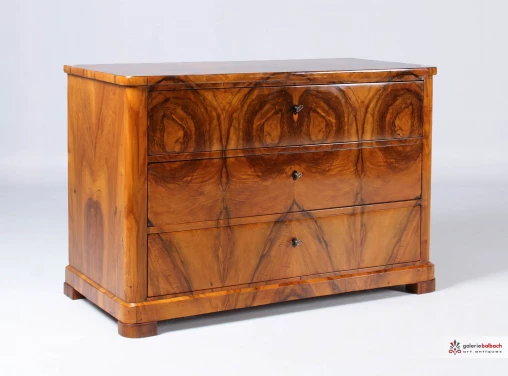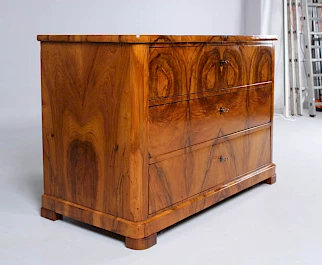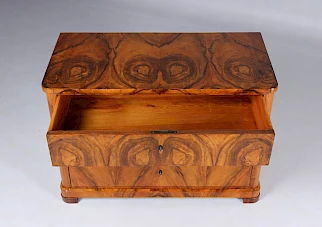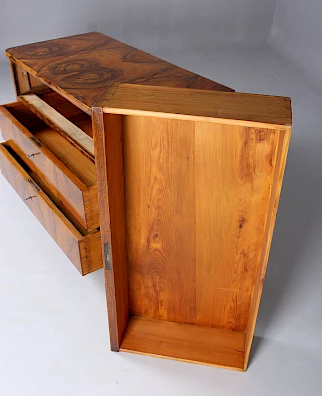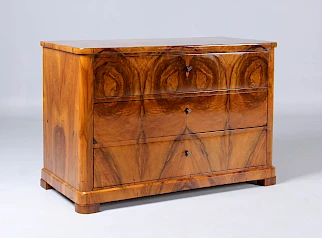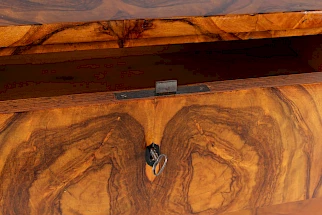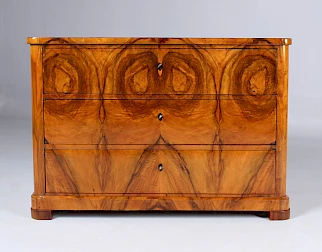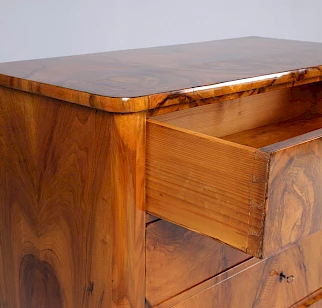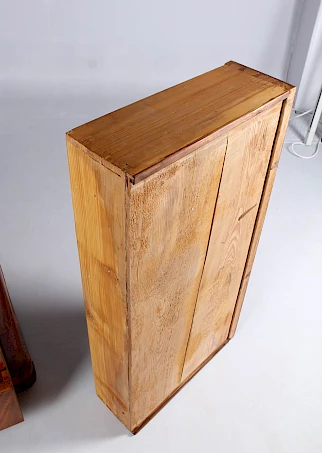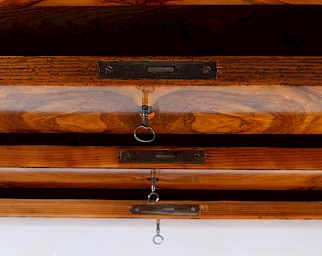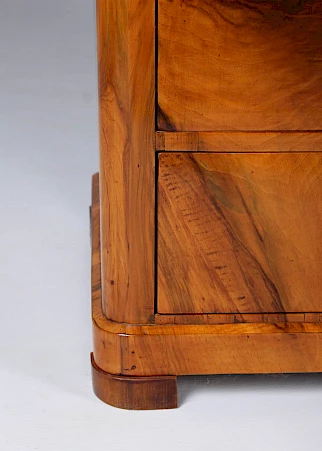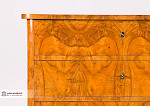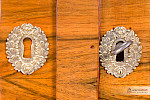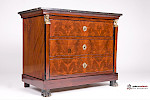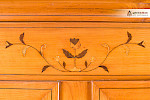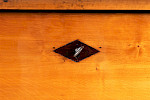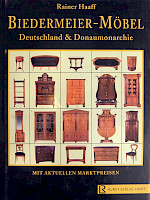Classic Biedermeier Commode
Southwest Germany / Swabia
Walnut
Biedermeier around 1835
Dimensions: H x W x D: 81 x 117 x 57 cm
Description:
Three-bay chest of drawers from the Biedermeier period with a dreamlike grain pattern.
Walnut veneered on softwood. Continuous grain from the base to the top plate. Mirrored and strictly symmetrical workmanship. Rounded pilaster strips lead to the beautifully veneered sides of the piece of furniture.
The top plate repeats the grain pattern of the front.
Inlaid key plates in ebony. Original locks.
The shellac hand polish fires up the wood; the light dark contrasts of the walnut really come into their own.
Good to know:
In the Biedermeier period, furniture was primarily designed using the wood itself. Decorative elements such as bronzes or inlays were largely dispensed with.
Veneers were laid in a mirrored pattern so that the pieces of furniture appeared calm and symmetrical.
This chest of drawers is a very good example of the understanding of furniture design of the time.
Condition:
Excellent condition. Very authentic furniture.
The runners are straightened so that all drawers run well and smoothly. One key is original, two are copied.
Classic shellac polish.
Price: This chest of drawers is already sold. Chests of drawers comparable in age and quality are priced at around 2800,- € to 3500,- €.
Comparable objects can be found in the specialist literature:
Wolfgang L. Eller - Biedermeier Furniture p. 167
Article found under: Chests of drawers
Also interesting
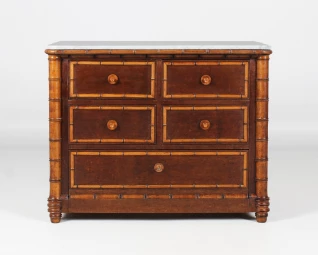
-Faux Bamboo- chest of drawers
Vienna (?)
Bird's eye maple, beech
second half of 19th century
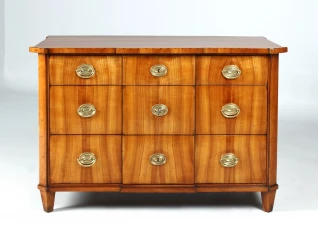
Classicist chest of drawers with central locking
Southern Germany
Cherry tree
Early 19th century
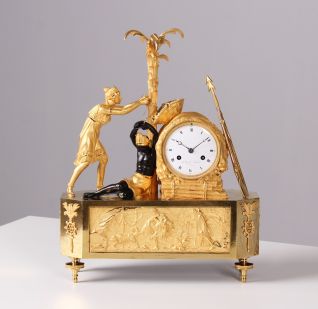
Mantel Clock "Atala and Chactas"
Paris
Bronze (fire-gilt and patinated), enamel
Empire around 1810
